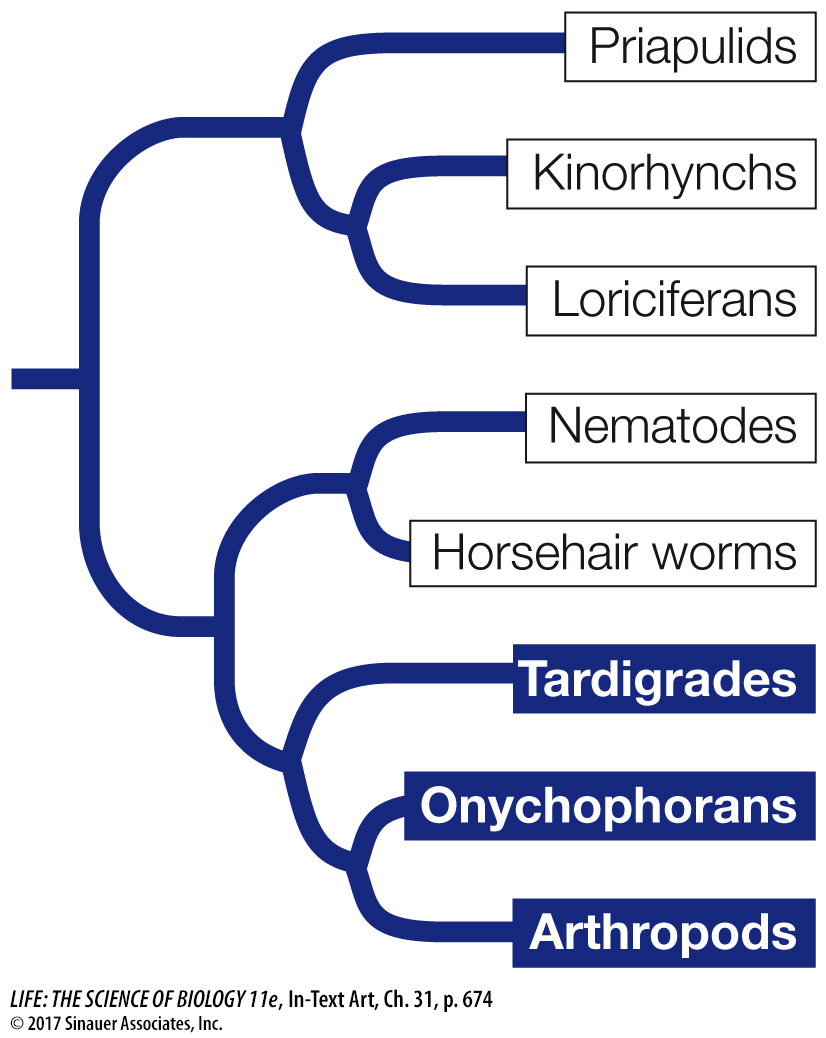key concept
31.4
Arthropods Are the Most Abundant and Diverse Group of Animals
key concept
31.4
Arthropods Are the Most Abundant and Diverse Group of Animals
Arthropods and their relatives are ecdysozoans with paired appendages. Arthropods are the most diverse group of animals in numbers of species (more than 1.2 million have been described, and many more remain to be discovered). Furthermore, the number of individual arthropods alive at any one time is estimated to be about 1018, or 1 billion billion. Among the animals, only the nematodes are thought to exist in greater numbers.
focus your learning
Several key features have contributed to the success of arthropods.
Most pterygotes have two pairs of wings and go through complete or incomplete metamorphosis.
Insects started to diversify about 450 million years ago, about the same time as land plants first appeared.
Insects exchange gases via their tracheae.
Several key features have contributed to the success of the arthropods. As you have seen, their muscles are attached to the inside of their rigid exoskeletons. Their bodies are segmented, and each segment has muscles that operate that segment and the jointed appendages attached to it (see Figure 31.4). Jointed appendages permit complex movements, and different appendages are specialized for different functions. Encasement of the body within a rigid exoskeleton provides the animal with support for walking in the water or on dry land and provides some protection against predators. The waterproofing provided by chitin keeps the animal from dehydrating in dry air.

The four major arthropod groups living today are all species-
The jointed appendages of arthropods gave the clade its name, from the Greek words arthron, “joint,” and podos, “foot” or “limb.” Arthropods evolved from ancestors with simple, unjointed appendages. The exact forms of those ancestors are unknown, but some arthropod relatives with segmented bodies and unjointed appendages survive today. Before we describe the modern arthropods, we will discuss those arthropod relatives, as well as an early clade that went extinct but left an important fossil record.